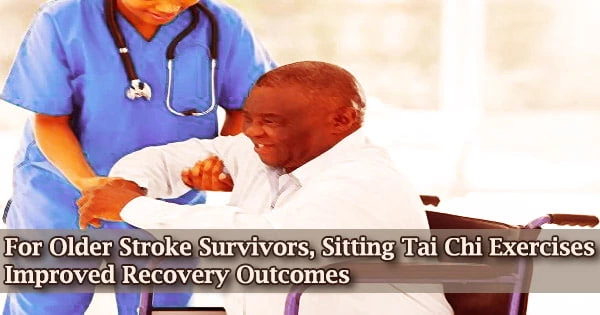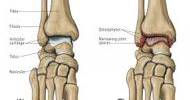According to new research published today in Stroke, stroke survivors who practiced a seated form of Tai Chi showed equal or greater improvement in hand and arm strength, shoulder range of motion, balance control, depressive symptoms, and activities of daily living after three months as compared to those who took part in a conventional exercise program for stroke rehabilitation.
According to the American Heart Association/American Stroke Association’s Guidelines for the Early Management of Patients with Acute Ischemic Stroke, stroke rehabilitation should begin within seven days after the occurrence of the stroke and last for up to six months.
However, since they lack physical stability or are unable to completely utilize their arms, many survivors choose to forgo rehabilitation therapy. In a Scientific Statement about Physical Activity and Exercise Recommendations for Stroke Survivors, the Association adds that flexibility and muscle strengthening exercises, such as yoga and tai chi, have been shown to benefit stroke survivors by enhancing balance, quality of life, and mental health while lowering their fear of falling.
A series of slow, deliberate movements involving the hands, arms, neck, legs, and core are paired with deep breathing in Tai Chi, an ancient Chinese martial art. The unique aspect of this study is that it was designed for persons who had recently suffered from an ischemic stroke (a blocked blood vessel to the brain), hand and arm weakness, or partial paralysis.
“Tai Chi has a long history as a form of exercise in China. We revised the Tai Chi movements for people who have weakness or partial limb paralysis. It is tailored so that participants can move one arm with the help of the healthy arm,” said Jie Zhao, Ph.D., lead study author and a lecturer at Yunnan University of Traditional Chinese Medicine in Yunnan, China.
Two hospitals in Kunming, China, that practice traditional Chinese medicine were the sites of the study. 160 persons (average age, 63 years; 81 men, 79 women) who had their first ischemic stroke within six months of enrolling in the trial and were still able to use at least one arm were included in the study.
Half of the trial participants were randomly assigned to the sitting Tai Chi program, and the other half were in the control group, which engaged in a typical exercise regimen for stroke rehabilitation (hospital-recommended upper limb movements; the amount, implementation strategies, and caregiver responsibilities were similar to the Tai Chi group).
Sitting Tai Chi can be practiced in a chair or wheelchair and is very convenient since it can be done in your home. The program costs almost nothing to practice, and it doesn’t require any special equipment or travel time.
Jie Zhao
During their hospital stay, the members of the seated Tai Chi group received individualized instruction from a Tai Chi teacher for one week. They also received a self-help video to practice at home for 11 weeks, three days a week.
The control group was given a self-guided workout video with typical activities to perform over the course of 12 weeks at home. The at-home exercise was supervised for both study groups by family members and caretakers. Both the 12-week program and the 4-week follow-up were completed by 69 participants in the sitting Tai Chi group and 65 participants in the control group.
All study participants had their physical function and psychological state assessed using questionnaires and other tools at the beginning of the study and four more times throughout the 16-week program. The results of the two groups were then compared.
Researchers analyzed the questionnaires and assessment tools and found:
- Compared to those in the normal stroke rehabilitation group, those in the sitting Tai Chi group had superior hand and arm function as well as better sitting balance control.
- When compared to the control group, the participants in the seated Tai Chi class significantly reduced their depressive symptoms, had greater shoulder range of motion, and displayed significant improvements in their daily activities and quality of life.
- After the 12-week intervention, more over half of the members of the Tai Chi group continued to practice. The Tai Chi group’s 4-week follow-up phase saw continued improvement in these metrics.
“Sitting Tai Chi can be practiced in a chair or wheelchair and is very convenient since it can be done in your home. The program costs almost nothing to practice, and it doesn’t require any special equipment or travel time,” Zhao said.
This is the first randomized controlled experiment that examined a modified sitting Tai Chi routine and discovered better short-term results in a population who could find it difficult to follow a conventional exercise program for stroke recovery.
The findings show that this mind-body technique is a useful way to improve balance, coordination, strength, and flexibility, especially for stroke victims who have weak hands and arms or partial paralysis.
“My follow-up study will measure the long-term effects of sitting Tai Chi,” Zhao said. “People will most likely need to adhere to the sitting Tai Chi exercise beyond 12 weeks to get the beneficial long-term effects.”
The fact that the study was carried out at just two centers is one of its drawbacks. The results might not be indicative of the rehabilitation programs available to stroke survivors who receive care at other hospitals because the doctors and healthcare workers at the centers have training in traditional Chinese medicine and support the study.
Stroke is the sixth most common cause of mortality and a major contributor to long-term disability in the United States, according to the American Heart Association.
















